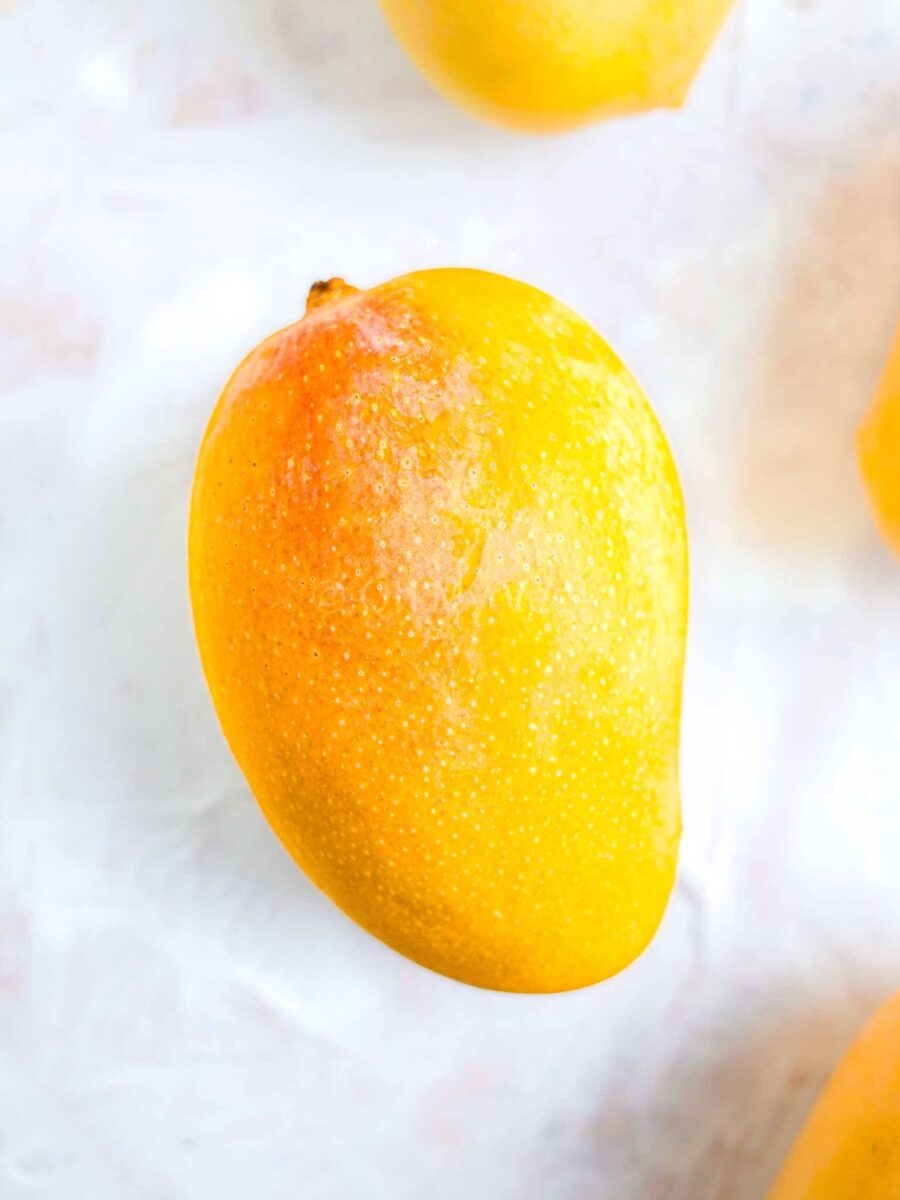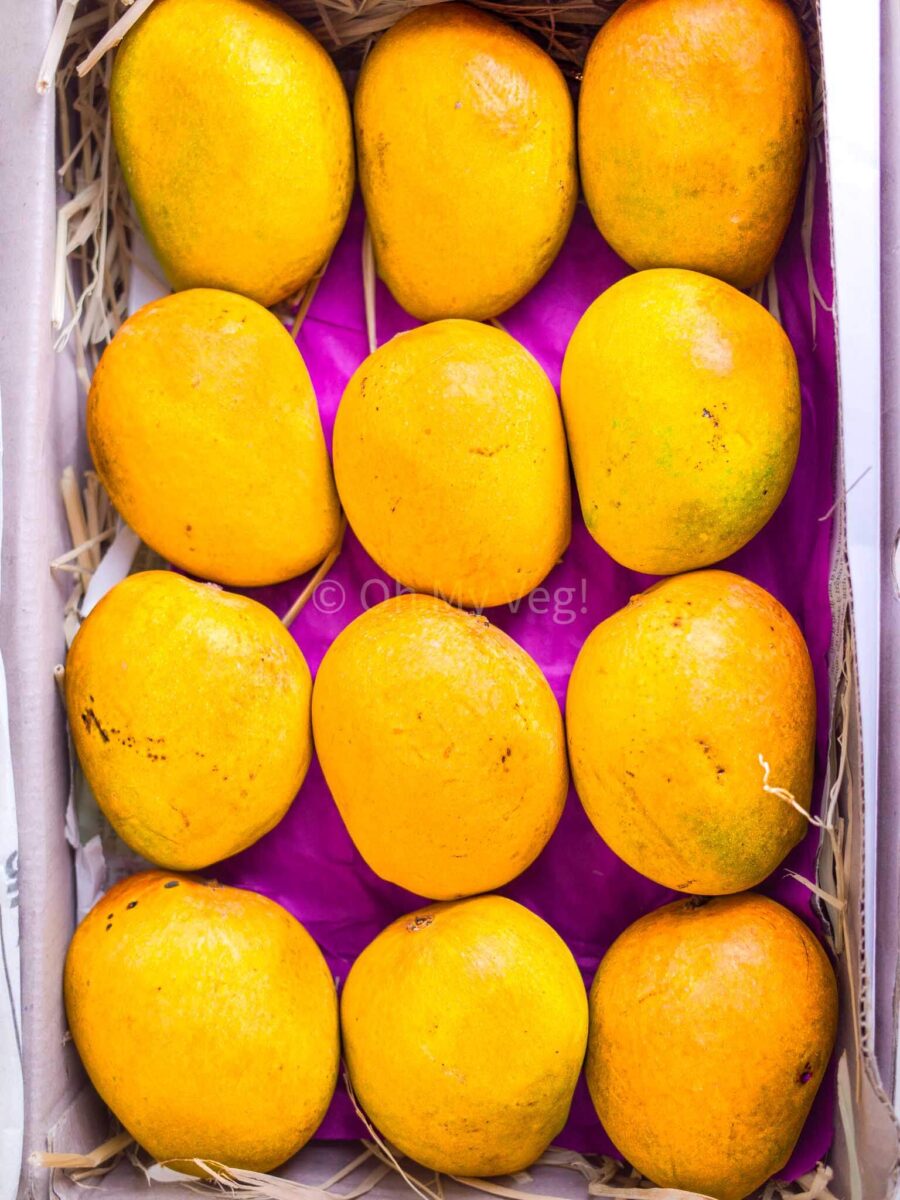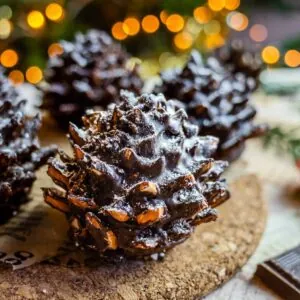Aamrakhand, Mango Shrikhand
A celebration of summer flavours, aamrakhand (mango shrikhand) is a dessert that’s as sensational as it is easy. Luscious, thick, and creamy yoghurt is stirred into smooth, tropical, and naturally sweet mango pulp, then finished with the aromatic richness of Indian spices. It’s utterly tempting.
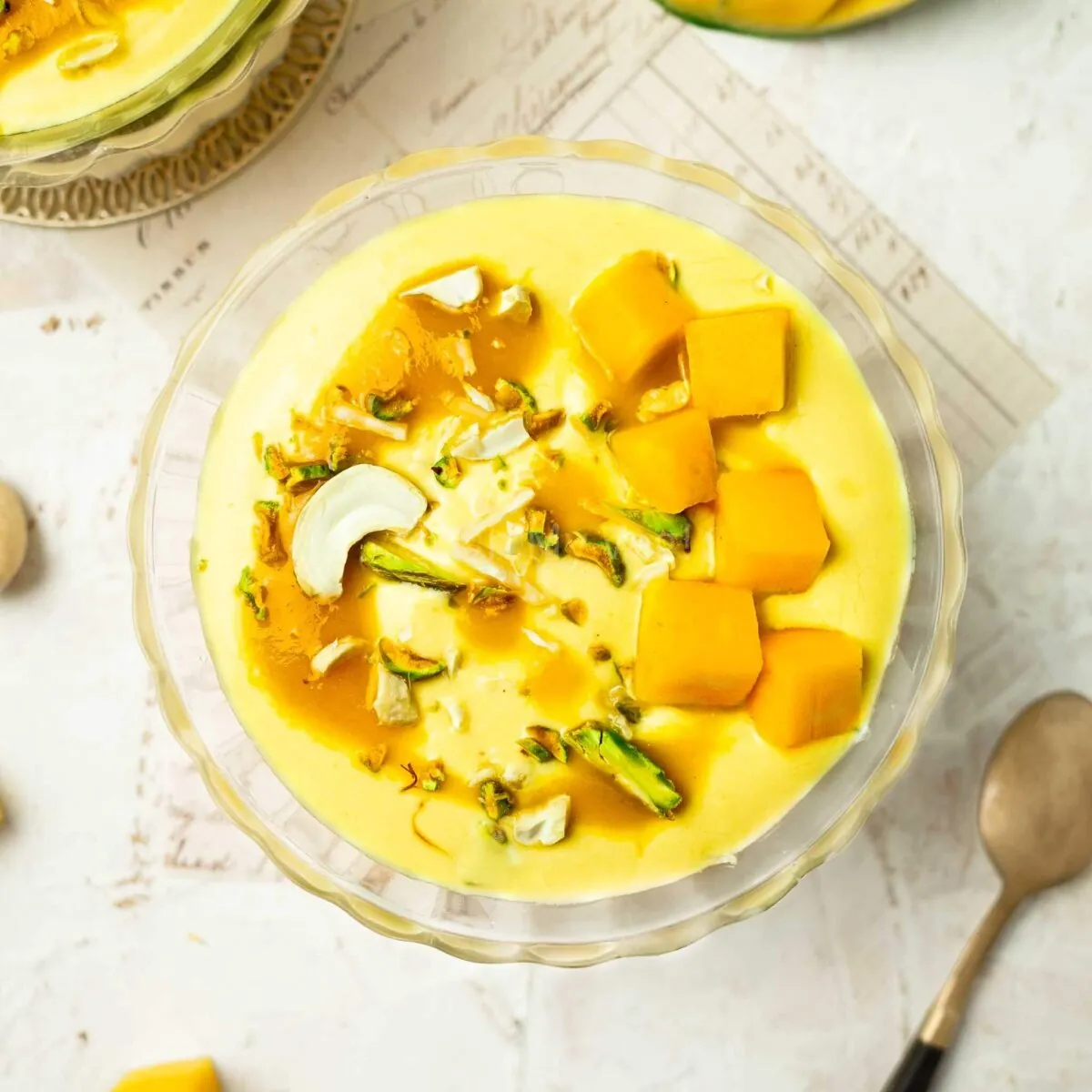
It’s officially mango season in India, meaning only one thing: Everyone across South Asia, from barely-walking toddlers to grandparents, is hungry for the sweet fruits.
I’m not lucky enough to have my own mango tree in the garden. Isn’t that a dream?! However, as soon as I get wind of the first Indian mango shipments to the U.K., I pop straight to my local market, pick up a box, and make my first batch of aamrakhand.
Aamrakhand is especially popular during Gudi Padwa (Maharashtrian New Year), when the sweet is featured on festive thali platters and the mango leaves decorate the gudi (a pole decorated with an upturned pot, fabrics, and garlands).
However, there’s no need to wait for special occasions. Most people make aamrakhand when the desire strikes, and I’m the same. In the hot summer months, I make a batch every week!
Is mango shrikhand calling your name? If so, what are you waiting for? Read on!
😍 Why You’ll Fall in Love With This Mango Shrikhand
🤔 But Wait, What IS Aamrakhand?
Aamrakhand is a modern riff on the traditional Maharashtrian and Gujarati dessert, shrikhand.
Whereas shrikhand is made from hung yoghurt, sugar, and aromatic spices, aamrakhand takes it one step further by introducing fresh summer mangoes (aam) to the mix!
If we were to use English, it would be best described as mango-flavoured yoghurt. But that lacklustre representation does no favours to the divine flavours, which are light-years ahead of anything you can buy in a store.
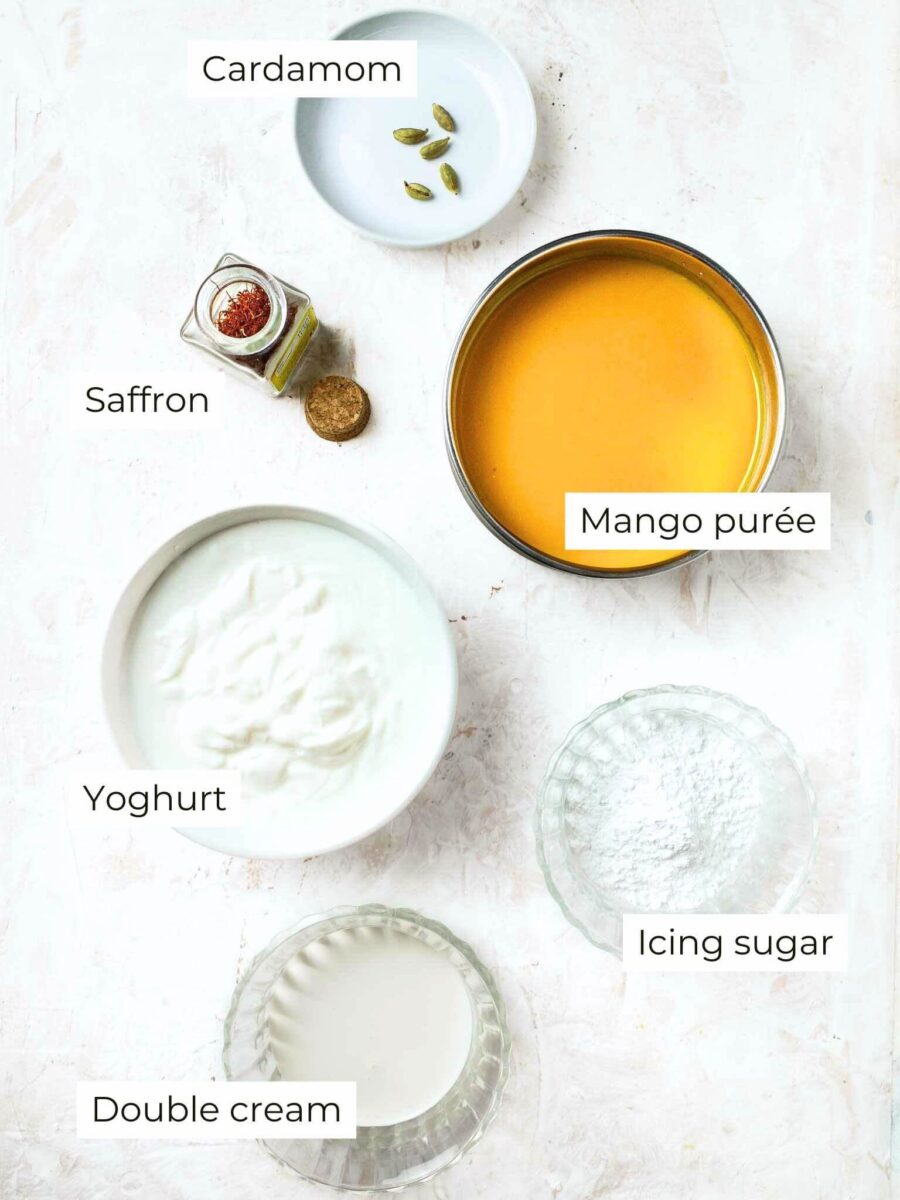
🥭 What Is Aamrakhand Made Of?
- Mango pulp: Either made from fresh mangoes or ready-made tinned mangoes, this provides the tropical fruity flavour we need. Maharashtrian Alphonso (hapus) is best, but read on for my further advice and recommendations on which type of mangoes you should use.
- Yoghurt: In India, homemade “curd” is usually used for recipes like curd rice, raita, shrikhand, and aamrakhand. Since this isn’t readily available elsewhere, I recommend using good-quality Greek yoghurt, as it’s thicker.
- Icing sugar: Otherwise known in the U.S. as confectioners sugar. Unlike the coarser caster or granulated sugar, because icing sugar is so fine, it easily whisks into the mango shrikhand, allowing you to adjust the sweetness to your preference.
- Double cream: Adds an extra layer of creamy indulgence, thickens the shrikhand, and slightly tones down the natural sourness of the yoghurt. You can skip this and substitute it with extra yoghurt.
Although these ingredients are enough for the basic version of mango shrikhand, adding a few aromatic spices and garnishes undoubtedly upgrades the dessert.
- Cardamom: Provides complex piney, citrusy undertones. You can crush fresh green cardamoms, which is usually more impactful, or use premade cardamom powder.
- Saffron: Sweet, floral, and slightly bitter, saffron is treasured for its gorgeous colour. You can soak it in warmed milk or crush it in a mortar and pestle to release the essential oils, then add it to the aamrakhand.
- Nuts: I like to use pistachio, almond, and cashew slivers to decorate my mango shrikhand.
- Rose petals: Add a delicate floral flavour and a real “wow” effect to your presentation. Use dried food-grade petals.
Fresh Mangos vs Canned Mango Pulp
Needless to say, the type of mango you use for aamrakhand is one of the most pivotal factors for determining the final flavour of your dish.
If you’re making this recipe during Indian Mango season (March to August), it’s worth using fresh fruit — the bright, floral sweetness and silky texture are beyond compare. The natural fragrance alone is enough to make this aamrakhand feel extra special!
That said, canned mango pulp (especially Alphonso or Kesar pulp) is a convenient and consistent option since it’s available from most Indian markets year-round. It’s smooth, vibrant, and pre-prepared: ideal for anyone with fine motor issues. Just keep in mind that canned pulp contains more preservatives and sugar.
Choosing Which Mangoes are Best for Aamrakhand
Chosen to use fresh mangoes? Great choice!
Did you know that India alone boasts roughly 1500 varieties of mangoes? Isn’t that extraordinary! Not to mention all the others available globally — and which mango you pick will seriously dictate whether your aamrakhand is just “nice” or “wow.”
For this recipe, I recommend staying away from Mexican, Thai, or Dominican mangoes. While they’re passable in other cultural foods, Indian recipes like mango lassi, aamrakhand, or mango kulfi demand more.
Whatever you do, don’t buy mangoes from your local supermarket. They’re expensive, and although they’re ripe inside, the fruit has none of the fragrant aroma that’s so tantalizing about mangoes. Most importantly, they lack bold flavour and lean toward tangy and sour as opposed to sweet. We don’t want that!
Instead, head to your local Indian market to buy matchless mangoes. During mango season, there will be boxes of mangoes (pictured above) that you can pick up and smell.
Outside of South Asia, the varieties you’ll see sold most often are Alphonso (Hapus) and Kesar. Badami, Dasheri, and Banginapalli are less accessible but worth trying, as are Pakistani and North Indian Honey and Chausa varieties.
If I were to suggest one? It has to be Alphonso (Hapus) mangoes — they’re called the “king of mangoes” for a good reason.
🧑🍳 How to Make Aamrakhand (Step-by-Step Photos)
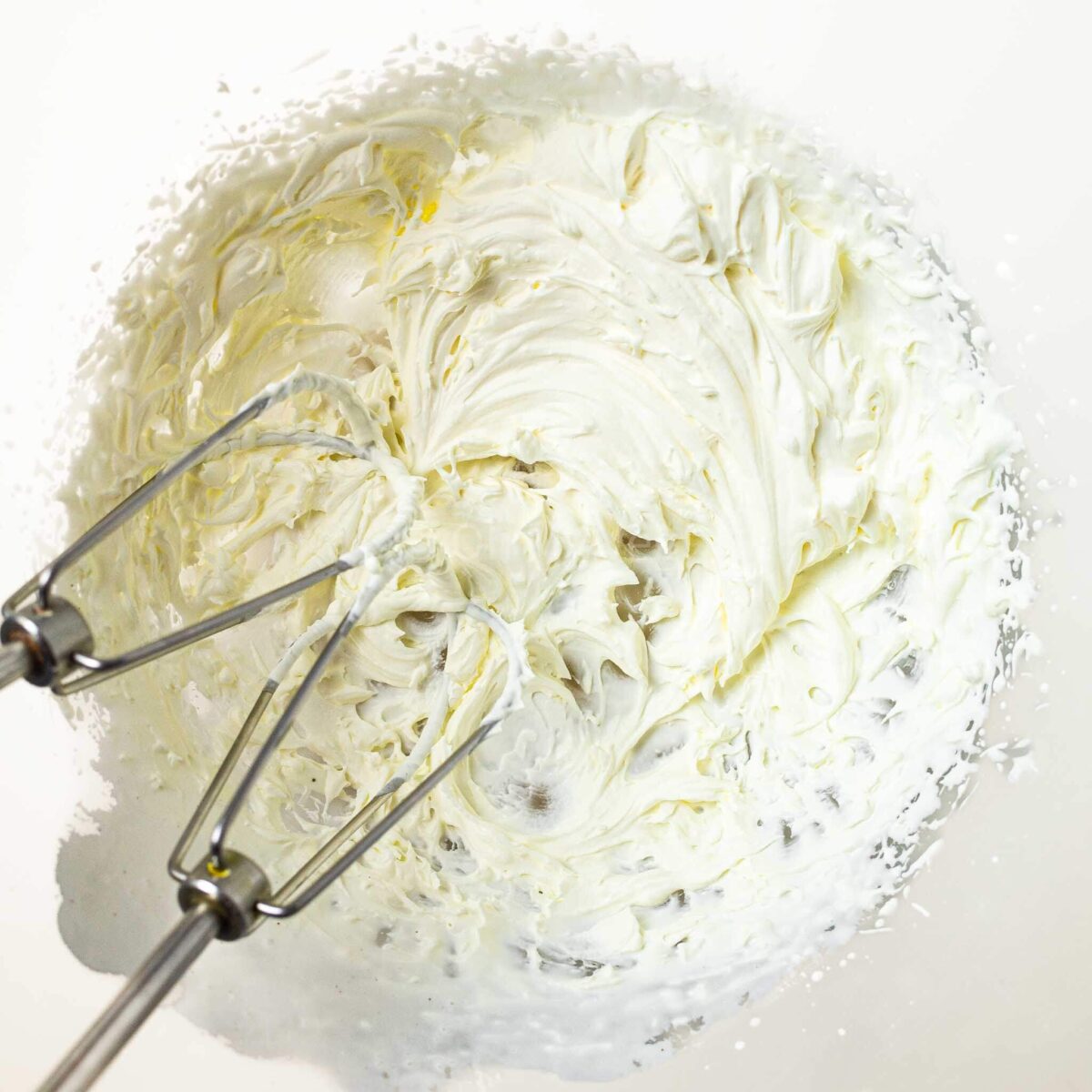
One: In a large bowl, whisk the double cream until you get stiff peaks.
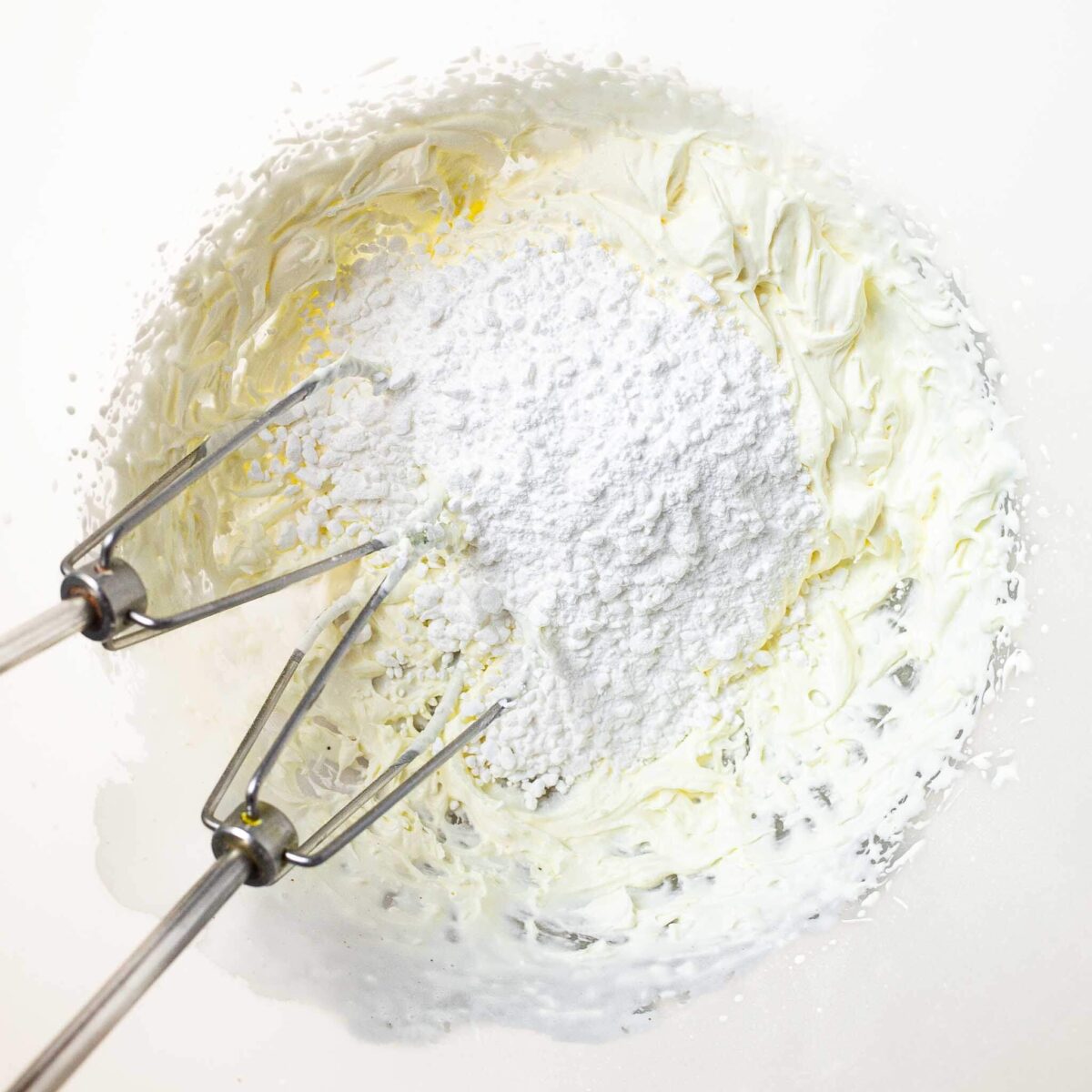
Two: Add the icing sugar and give it a quick whisk to combine.

Three: Pass the Greek yoghurt through a cheesecloth, tie the cloth tightly, and squeeze to remove excess water. You can “hang” the cloth for an hour or two, but some manual squeezing should suffice.
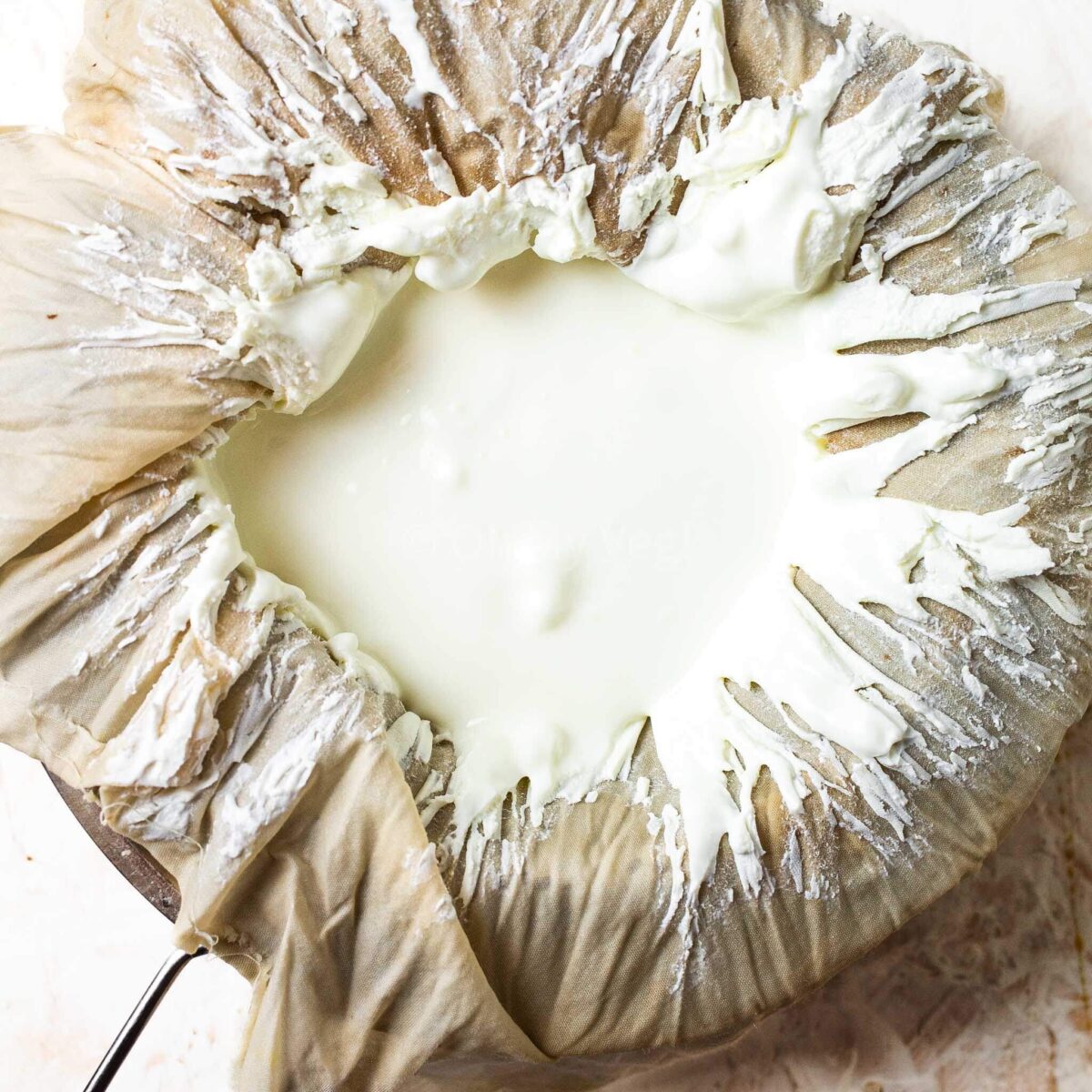
Four: Open the cloth again and scrape the thickened yoghurt from the sides.
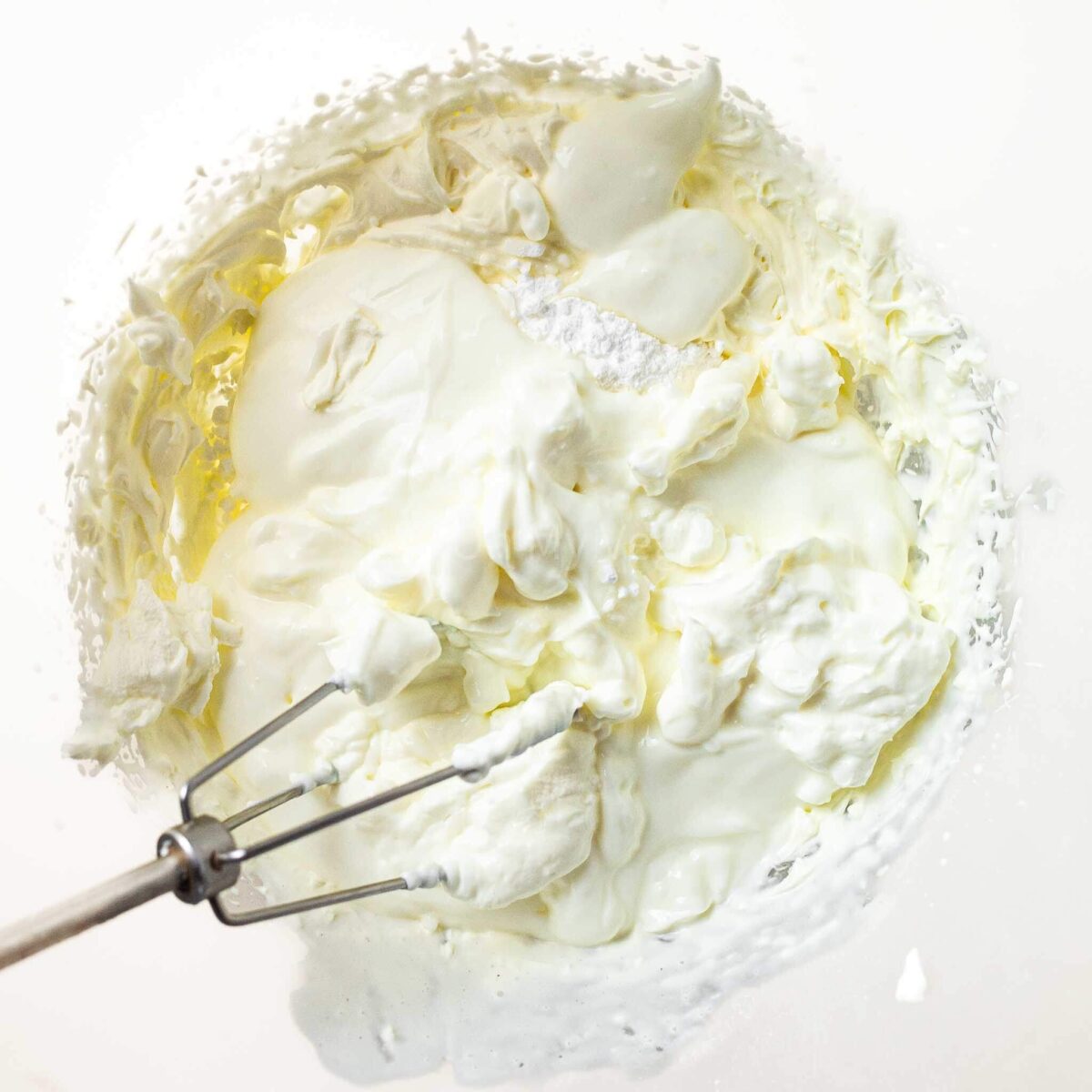
Five: Add the thickened, strained yoghurt to the bowl, along with the sweet whipped cream.
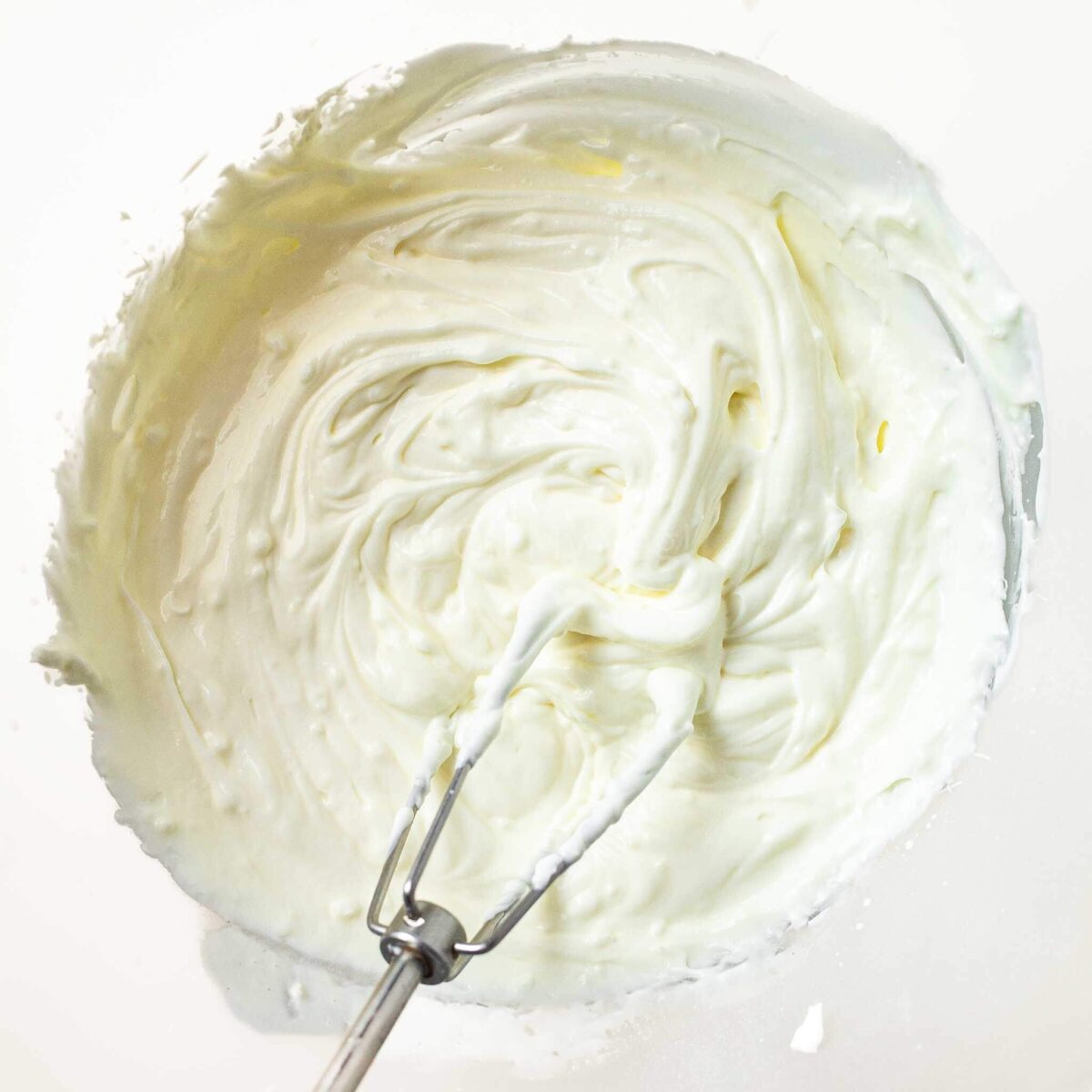
Six: Use a whisk to combine everything.

Seven: Add your mango puree to the bowl, along with a pinch of salt (to taste). Whisk to combine.
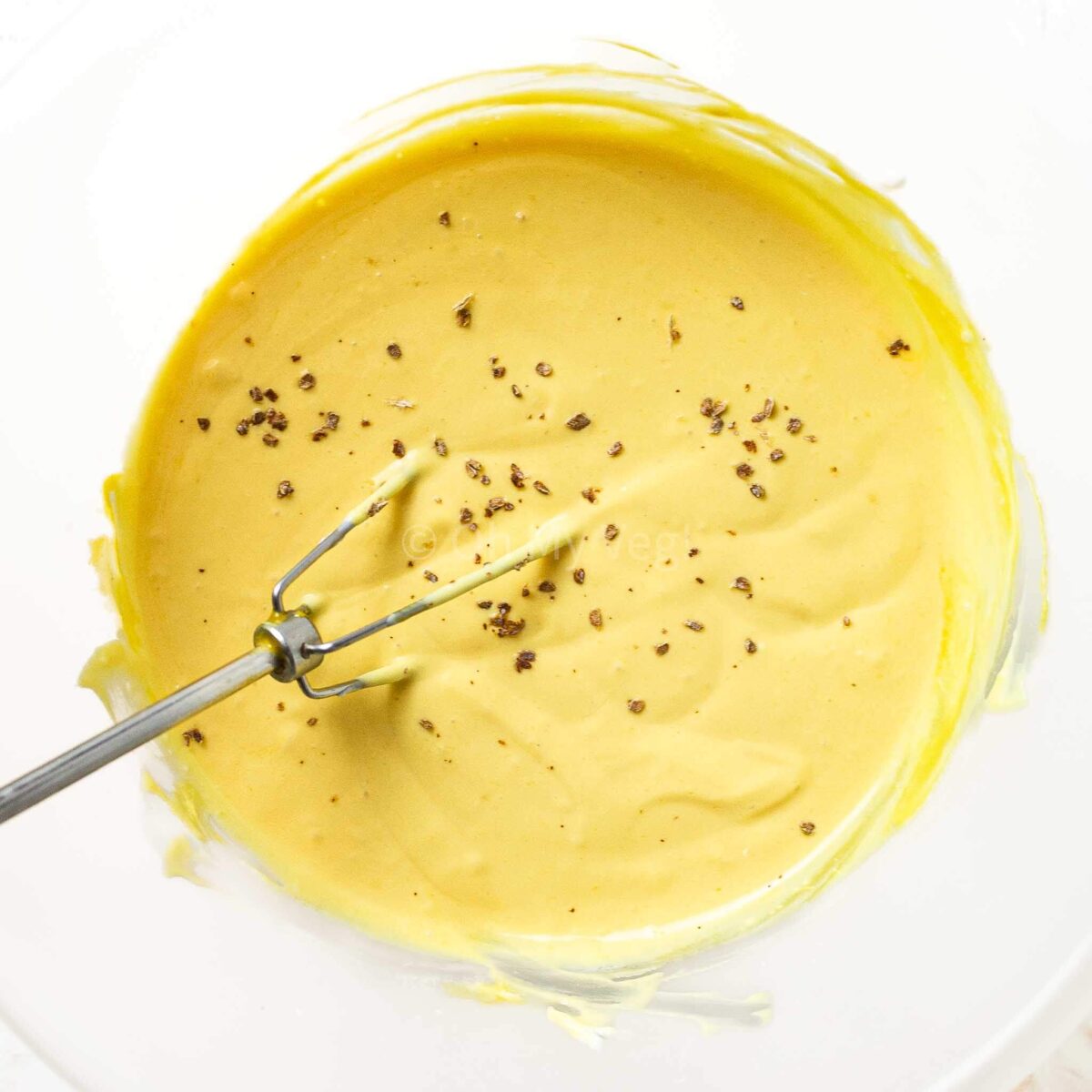
Eight: Finish with a touch of cardamom and saffron (if using), then serve.
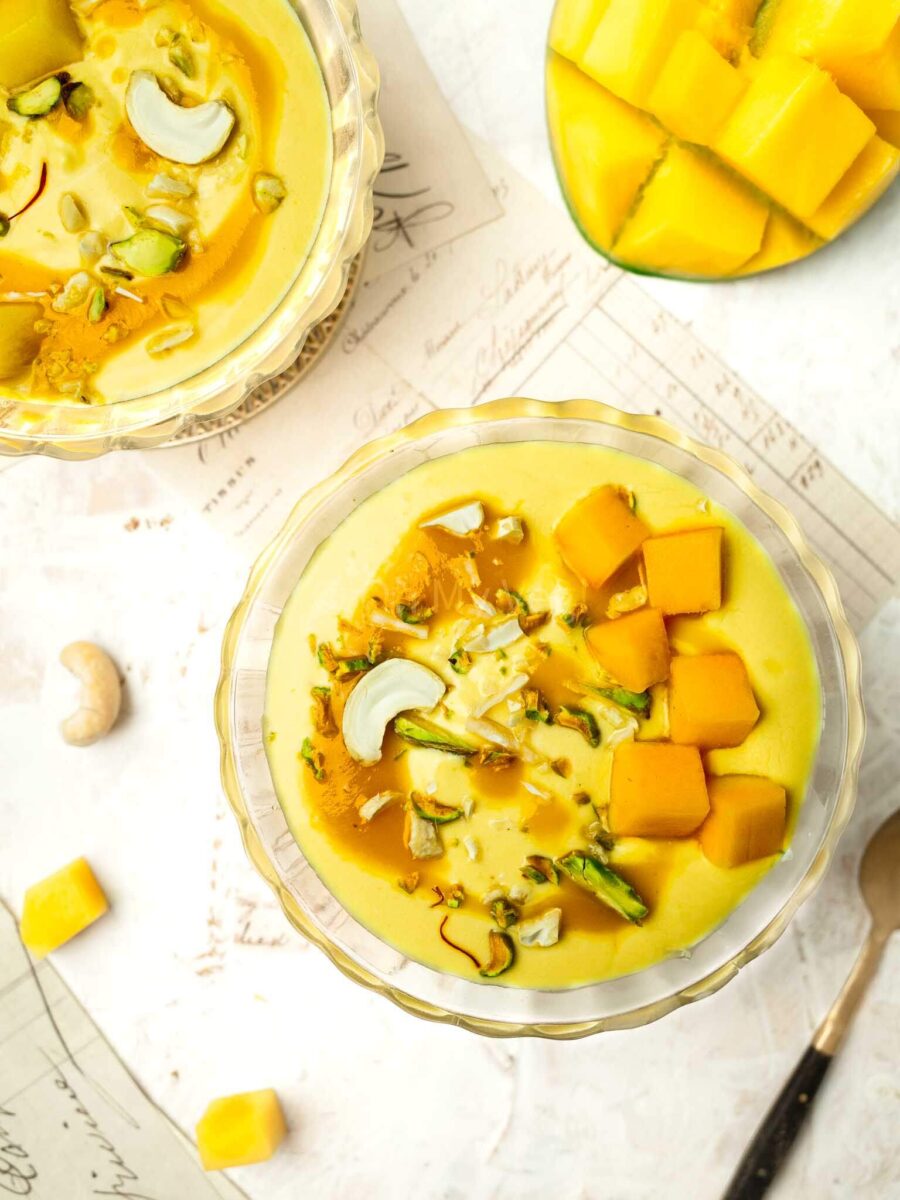
🫙 Storage Instructions
Aamrakhand is best served on the day of making and tastes best chilled.
Store in an airtight container in the fridge for up to four days.
The recipe doesn’t freeze well, but if you have leftovers, you can make a mango-flavoured piyush drink — it’s gorgeous, especially in sweltering summer heat.
🫓 Serving Suggestions
Depending on the occasion, you can either dress aamrakhand up as a party showstopper or keep it neutral so it doesn’t overshadow other meal components.
Perhaps the most beloved combination is mango shrikhand with puris (crisp and puffy fried breads). You carefully tear pieces off the puri, using the bread to scoop up the thick, sweet, fruity yoghurt. It’s a delicious combination, not least because of the textural contrast.
Alternatively, serve aamrakhand in a small bowl as part of a festive summer thali alongside favourites like batata rassa, puris (or parathas), and onion bhaji.
Hosting a dinner party for a crowd? Carefully spoon the aamrakhand into small glass jars and top with nuts, mango chunks, and rose petals. They look marvellous as part of a buffet table!
If you tried this aamrakhand recipe — or any other recipe on my website — please leave a 🌟 star rating and let me know your thoughts in the ✍️ comments at the bottom of the page. Thanks for being a part of my community!
Aamrakhand, Mango Shrikhand
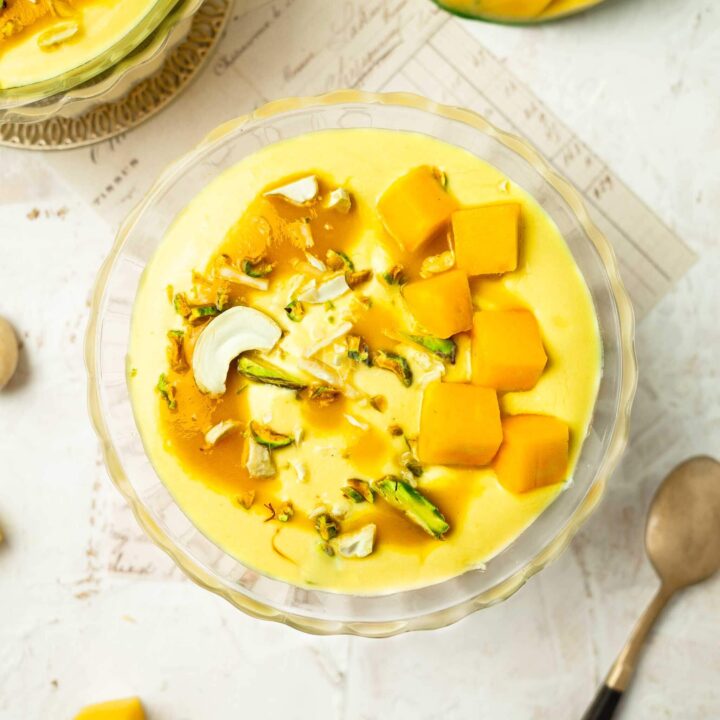
A celebration of summer flavours, aamrakhand (mango shrikhand) is a yoghurt and mango dessert that’s as sensational as it is easy.
Ingredients
- 70ml Double Cream (5 tablespoons)
- 500g Greek or Natural Yoghurt
- 150ml Mango Pulp (10 tablespoons)
- 4 tablespoons Powdered Sugar
- 1/4 teaspoon Cardamom Powder
- Saffron, few strands
- Nuts, to garnish (optional)
Instructions
- Place a cheesecloth-lined sieve over a bowl. Pour the yoghurt into the cheesecloth and gather the corners, tying it tightly. Squeeze the yoghurt to remove excess water. Repeat this squeezing process a few times. Set aside.
- In a large bowl, add the double cream. Use a whisk to whip the cream to stiff peaks.
- Add the powdered icing sugar to the bowl and stir it into the whipped cream.
- Scrape the strained, thickened yoghurt from the cheesecloth into the same bowl. Once again, stir to mix.
- Add the mango pulp, a pinch of salt (optional), and cardamom powder. Stir to combine.
- Optionally, serve with chopped nuts and fresh mango chunks. Mango shrikhand tastes best served cold from the fridge.
Recommended Products
As an Amazon Associate and member of other affiliate programs, I earn from qualifying purchases.
Nutrition Information:
Yield:
4Serving Size:
1Amount Per Serving: Calories: 227Total Fat: 12gSaturated Fat: 6gTrans Fat: 0gUnsaturated Fat: 6gCholesterol: 27mgSodium: 112mgCarbohydrates: 22gFiber: 1gSugar: 20gProtein: 9g
Nutrition information isn’t always accurate.

